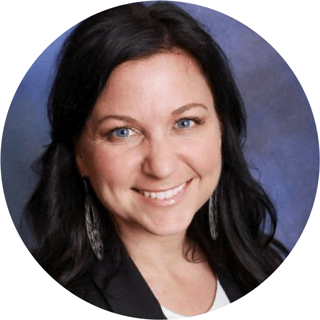
"People don't care about churn because that's a company outcome, not a customer outcome."
- Nicolle Paradise, paraphrasing Bill Cushard
One of the easiest ways to improve the customer experience and their success is to simply ask how they're doing. Ask them how they are enjoying using your products and if they have any questions. But asking customers directly can lead to skewed information, as you tilt the CX scale to the positive simply with the words you use. You're leading them to an unconscious bias when it comes to you and your products, which doesn't really help you in the long term (or your customers either).
In our latest episode of Helping Sells, Nicolle Paradise, Senior Director of Client Experience at ADP explained how she uses data and customer feedback to help guide how ADP deals with customers.
Nicolle is a "big fan" of looking at customer data to discover how they're really feeling about her products and company. She combines what customers tell her with what the data to get a holistic view of the customers.
You can listen to Helping Sells here, on Apple Podcasts, Stitcher, SoundCloud, or wherever you listen to podcasts.
Click-to-Tweet
Customer Experience Framework
In order to measure how ADP's customers are experiencing the products, Nicolle uses a CX framework she's developed over the years. It's made up of two main activities:
-
Identifying the aspects of the client experience that drive loyalty for ADP.
-
Prioritizing those drivers based on the usage and/or value to the customer.
Work from the Outside In
Nicolle explained that using an outside/in approach in CX is important, otherwise you won't be able to prioritize loyalty drivers well enough. It's easy for companies to determine what's valuable to them, but that doesn't matter from a CX and CS perspective. What matters in CX is the customer, always the customer. "What's the intended experience of the product and how (do you) engineer the product to meet that?" Nicolle explained to Bill and Sarah.
Uncover your product usage data for a clearer customer view
By looking at the customer's effort needed to use your products and the quality of that experience, you'll be able to make changes to the product more quickly. And make changes that impact customers in a positive way.
Customer usage data of your products will also help here, telling you how your customers are using your products and what you can do to improve their experience. It can also impact other areas of your organization, not just product development. By looking at the data and seeing what product features they are using (or not), you'll be able to determine if additional customer education programs are needed, perhaps a new marketing campaign about a little-used, but very helpful, product feature, and more.
Use all the tools at your disposal
"Is it possible to monitor Customer Experience just by looking at data? Can we do that?" Bill was curious, since it can be hard to get customers to tell the truth when asking for feedback.
"In some organizations it's possible," Nicolle replied. "But I wouldn't recommend it." She explained that the data is only one part of the equation. It only gives you some of the information you need to create a positive CX for customers. At some point you'll need to speak to the customers to get the information directly from them. "You still have to talk to people to see what they're doing, how they're feeling, how they're using your products," she said. After all, you may discover your customers are using your products in a completely unexpected and unintended way that works!
Work with a symphony of tools
Nicolle likes to call her CX a "symphony of tools" because it's made up of so many different things, each with a specific part to play. It's got to be "repeatable, scalable, and predictable", otherwise it won't help. This is why the "symphony" is important; by combining the different listening tools, organizations can get a better view of their customers, what they want and what they need.
Listen to our Latest Episode
To find out more about what Nicolle had to say, listen to the latest episode of Helping Sells.
If you liked this episode, you may like these resources too:




